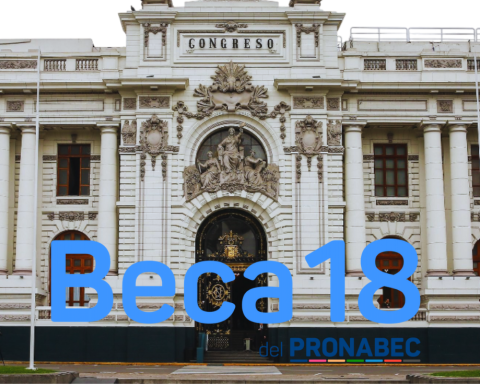in recent days we present a first compendium of some conflicts that play against Cuban culture. The objective was to share and debate criteria on some of these phenomena, anchored in the controversial areas of Cuban art. The speed of the events on the Island during these weeks has forced to swell the perspectives related to situations, unwritten laws and decisions that have lacerated the cultural expressions of the country and the knowledge about the work of several of its highest representatives.
A painful and sad event was the death of Holguin DJ and producer Ernesto Hidalgo when trying to cross the beaches of Tijuana into the United States. Tiko Sk8, as he was called in the world of the Cuban electronic scene, dedicated his entire creative life to Cuban culture, especially Holguin. He contributed in a notable way to the promotion of the youngest creators of the styles that coexist in that genre, founded festivals and placed the Cuban East on the radar of electronics and contemporary Cuban music. In summary, with the death of the DJ and producer Holguín, she lost one of the artists who has done the most for the culture of that province and Cuba was left without one of its main DJs and cultural promoters.
But despite all these merits, Tiko became unmentionable for the Cuban state media, at least those with the greatest visibility. His death has been ignored in the cultural pages of the newspapers, on television and in the rest of the national media that should have mentioned the fact, not even as an act of justice, but as a commitment to ethics. and culture. But it didn’t happen. Total silence. As if Tiko had not existed in the music scene, as if several of those same media that today are mute due to “superior orientations”, or due to the inertia of daily dynamics, had not once mentioned him when he was in front of any of their cultural projects.
The heavy ballast of silence can be interpreted in ways as diverse as the reflections of specialists and viewers. One of them says that the Cuban government and the media still do not know how to handle the media conflict of the mass migration of thousands of Cubans. To mention the death of a renowned artist on the journey would have been to give visibility to an issue whose causes have been touched upon with tweezers in the national press. The inconsistency in this case has deprived the Cuban electronic community and the thousands of followers of this DJ’s work and projects of the satisfaction of seeing, among the gallery of feelings that range from surprise to pain, how Cuba said goodbye with justice to one of the greatest exponents of electronic music in the country. Instead, only silence was heard.
It is not the first time, nor will it be the last, -unfortunately-, in which the exercise of avoiding the death of a representative name of the national culture is used due to the circumstances in which he dies or due to the veiled qualification of “deserter”, or in the worst case of “betrayal”, which has as its background the censorship of news related to a Cuban artist.
This kind of historical positioning has wreaked havoc on Cuban culture. There are plenty of examples of artists who have disappeared from the national media map when they have left Cuba and have made their differences with the island’s political system public. The list is so vast that it is impossible to name it in all its magnitude. One of the most representative examples is that of Celia Cruzwho was completely erased from the face of the national media and headed those unwritten blacklists known to radio announcers and other media outlets.
Censorship has only caused gaps, ignorance and cultural gaps that, over time, have become a relentless Boomerang. The balance of this displacement policy is partial knowledge or total ignorance on the part of the new generations about the contributions of some of the most emblematic figures of national culture. Those who carry out these acts do so, obviously, with all possible permissibility and among them are people who have historically done enormous damage to the expansion and cultural development of the country in terms of knowledge, references and creative understanding. That is why we sometimes say in some intellectual circles that Cuba is a country with little memory.
Sometimes the path that makes it possible for a musician to record with a national label becomes a very enigmatic process. The country’s record companies have as their main function to ponder the best values of national music, and leave testimony of his work through recordings and other promotional campaigns, work in which obviously the commercial aspect cannot be neglected. Most do so with knowledge of the facts and with the support of specialized teams that support the artist during the recording process, although this does not happen in the same way in the dissemination of recordings or other processes related to communication.
It is also true that too often the loss of connection with these quality-focused purposes has been perceived, when we see how artists without much to offer have a remarkable number of albums while others, with proven, high-flying work, do not. they haven’t had the chance to even record their album debut.
Names are not needed because it is not about throwing darts or demeriting the work of any author. It is simply a matter of calling for reflection and, incidentally, trying to direct our gaze towards the hierarchization of quality. And also to look for the causes, generally known, that give rise to these phenomena. There are plenty of examples in trova, rap, rock and pop, but we point out one for its cultural relevance, for its contributions in bridging trova with other music and for that unique communion it has established with various generations of audiences in All the island.
It is about the troubadours grouped in Trovuntivitis, that group of artists who after no less than twenty years managed to record their first album. EGREM was the label that finally complied with this group, but it took a long time, —too much—, for the debut recording of the people from Santa Clara who for two decades have maintained a rock in “El Mejunje” against all odds. Raúl Marchena himself, one of the members of the group, commented on his impression of him when I asked him a few years ago about the reasons for the absence of an album by Trovuntivitis. “Record companies don’t care. We will have to do it ourselves and when everything is ready and done, the discoverers of any birth will come”.
In Cuba there is no record industry, although we can read in some other publication or national media allusions, without logical basis, about the presence of these national platforms. It does not exist for very diverse reasons that have attacked the sale and internationalization of Cuban music. Their absence can be mitigated by establishing connections to a greater degree with other international platforms, with important artists in the industry who have shown interest in coming to Cuba or establishing links with the country’s cultural creation, something that has not been done systematically or with all the speed required; ignorance and fear of the unknown are not minor cards in that decision making.
What is true as a rock is that the officials who move in this scenario must have intellectual strengths and a solid training in the field of culture to understand the enormous complexities of music and cultural expressions and not occupy positions for supposed “political merits”, which, as is known, has brought negative consequences in the artistic scenarios of the country for decades.
However, there are producers, musicologists and specialists with a high professional level who, in record companies such as Bis Music and EGREM have bet all their cards on rock musicians or jazz projects. Over the years it has been shown that this type of set should not be the exception, but should be placed without major obstacles within the rule.
Specifically on the lines of action that relate this type of links for the promotion of culture, discography and music; as well as about the promotion exercise that should govern the presentations of phonograms, books and other cultural products, we will talk in a future issue.














